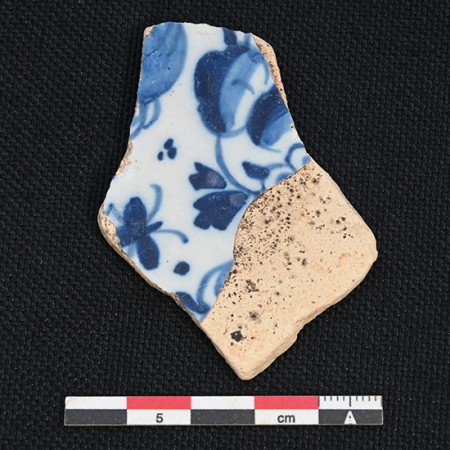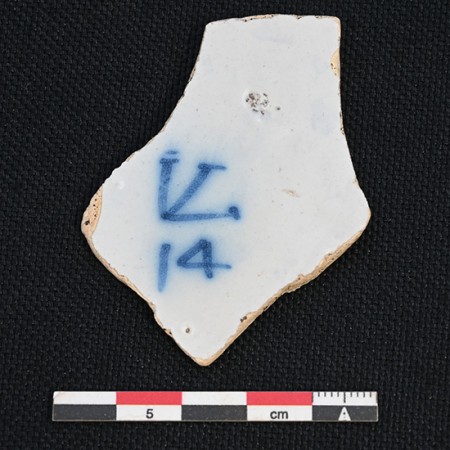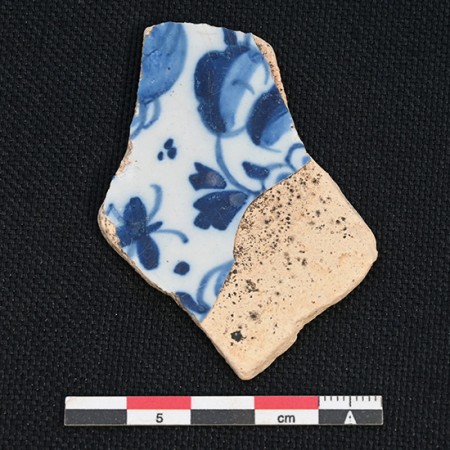Sherd from a 18th century archaeological context in Britanny (France). Dense decoration including foliage and flowers, dots or groups of dots, and a little butterfly. A mark "IVL 14" is showing on the other side.
Vraag
According to this website, the mark IVL might refer to Johannes van Lockhorst from the workshop De Klaauw (1713-1740), although I found another identification in Henry-Pierre Fourest's "La faïence de Delft" (1980), indicating that such a mark could refer to Jansz Van der Laan (T'Hart and De 3 Klokken, late 18th century). From the decoration, I think your identification might be more accurate. Could you help me identifying this mark ?
Regards,
Afmetingen
Approx. 5x7 cm
Collectie
publiekscollectie
Merk















Reacties 3
I think your estimation is right. There should be a dot on the "I" and that's clearly the case. difficult to say if this item is from a vase or a plate. In my opinion it's a sherd from a plate .
I"m sure experts on this site can tell more detailed information. May i ask where you found / bought it. very interesting.
mvg
Franky
Thanks for your answer. This sherd comes from an archaeological excavation carried out during the late nineties in Brittany (France), and is part of a public collection I studied.
By the way, I made a mistake about Jansz Van der Laan, whose mark would actually be dated from the late 17th century (but it seems I can't edit the original post).
Verdict:
Analysis:
Merk:
Dear CLG,
Pardon our late reply due to technical issues. Thank you for your intriguing photo of the shard, especially since it is marked. Throughout the last century-and-a-half attributions have changed a number of times. Up until 1764 we actually cannot be 100% certain of some of the marks. We however follow a certain line of attributing, mainly inspired by research by the late Mrs. Marion van Aken, curator of the Kunstmuseum The Hague. It is therefor possible that in future we may have to change attribution again, but for now the IVL mark is indeed attributed to Johannes en Margaretha van Lockhorst-van der Gucht, owners De Klaauw, 1713-1740. This is probable a fragment of a bottom, but it cannot be determined if it is a plate or for example a teapot.
All best and thank you for the upload.
Add new comment
Only logged in users can post comments
Log in or register to post comments